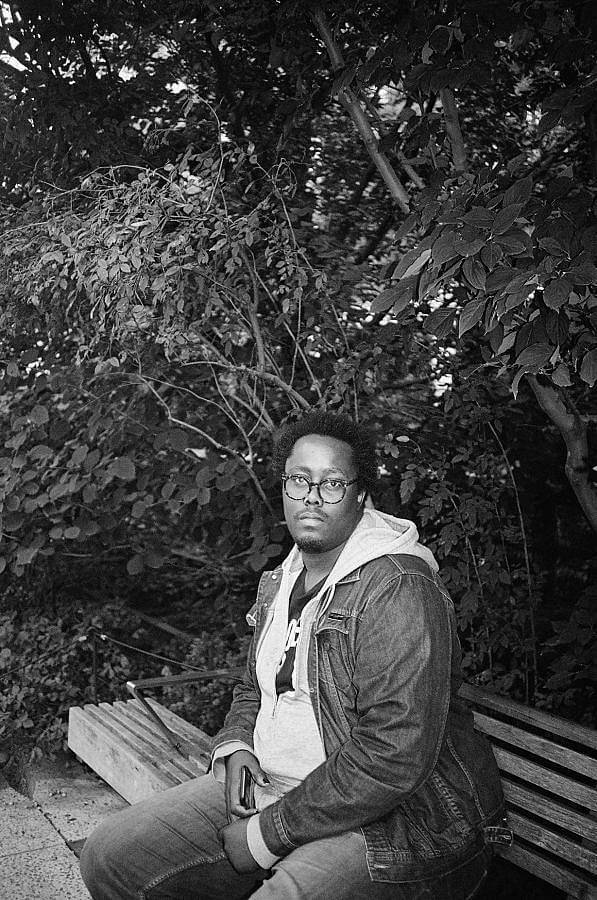Tell us a bit about yourself and what you do.
I’m Darryl DeAngelo Terrell
Pronouns: They Them / He Him
From Detroit, MI (Eastside)
Based in Detroit MI (Eastside)
a proud product of a Detroit Public School
Went to Wayne State University for my BFA
Went to SAIC for my MFA
I’m Queer AF, Black AF, and Soft AF!
I’m currently working on three bodies of work ( “#Project20’s”, “Dion”, “A Way To Get Gone” )
Member of CBIM (Concerned Black Image Makers) (@CBIM.IG )
Founder of @MOCA.IG (Museum of Contemporary Art on IG)
And also Co-Creator of “Contemporaries, The Podcast”
How did your interest in photography begin?
My interest in photography started in 2002, maybe 2003, with the premiere of America’s Next Top Model. Being an introverted little Gay boy in Detroit I always looked for ways to see myself in media whether it be television, movies, music, or magazines. I picked up my first camera
in 2007 when I was a sophomore in high school, a time when I had started to take a lot of horrible self-portraits. However, it wasn’t until I was in college when I visited the DIA: Detroit Institute of Arts where I saw “Too Disambark” by Glenn Ligon and it brought me to tears. Then again, when I took my second photography class in college and my professor Shana Merola introduced me to contemporary Black artists like Lourna Simpson, Carrie Mae Weems, and Hank Willis Thomas, it was everything to me, it made me want to make work that would have a lasting impact of people.
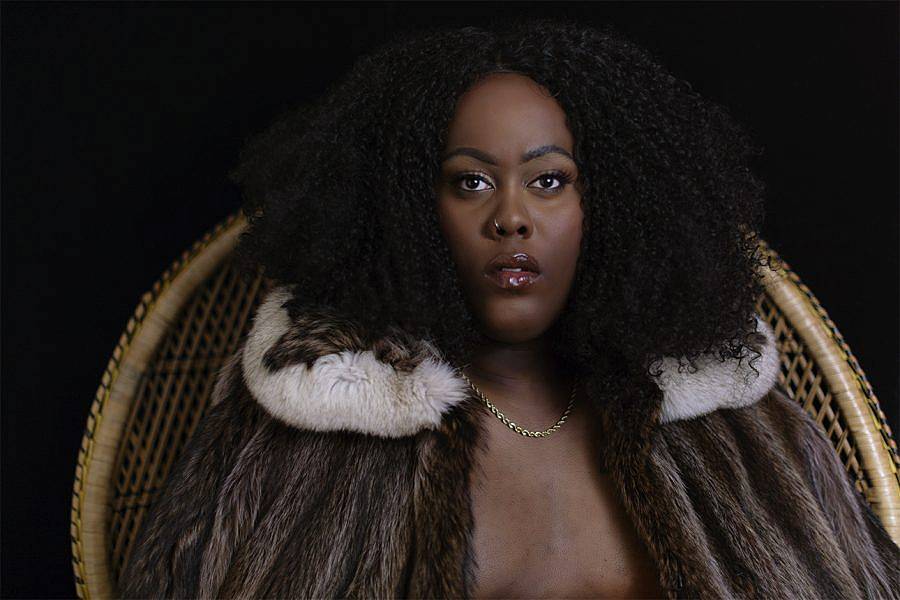
In the past few months, you’ve participated in several artist talks, guest curated for foundwork.art, and participated in online exhibitions. While navigating an art world that has largely moved online, what projects that you’ve participated in and/or viewed have been the most impactful?
There is this amazing organization called Save Art Space that puts contemporary art on billboards around cities in America, and they’ve been known to put work on billboards in New York City, Miami, DC, Philly, etc. I was a part of one of their billboard exhibitions in which one of my photos was displayed in an urban area that I thought was really important because I want my art to be accessible to all communities. I also want people to be able to see work that is different from what they are accustomed to. I was also invited by two institutions to do online artist talks which were extremely fun. The Detroit Historical Society Museum invited me to do an artist conversation via Zoom and then Ohio Wesleyan University invited me to do a Facebook Live artist talk where I talked about my practices and my research. I’ve also enjoyed how here in Detroit local creatives have been finding ways of programming during covid-19 so that we are staying entertained and informed and continue building community. I have taken it upon myself to do you know who Instagram live DJ sets, I’ve also attended countless amounts of Zoom artist talks from around the country.
The two most impactful arts experiences I had this year were the Allied Media Conference this past August, where I was invited to DJ for a performance pannel around the ideas of divine femininity and how it does not always have to center cis-gendered women, and an exhibition that I was in, titled Quiver of Voices, that was presented by the LTD LA Gallery.
However, the reason it was impactful for me is not positive. It had come to my attention in the middle of the exhibition that the gallery owner/curator of the exhibition had said some very violent anti-black statements as they pertain to the Black Lives Matter movement. Myself and other artists collectively withdrew from the exhibition, demanding the gallerist to publicly apologize for her actions which resulted in her closing her gallery.
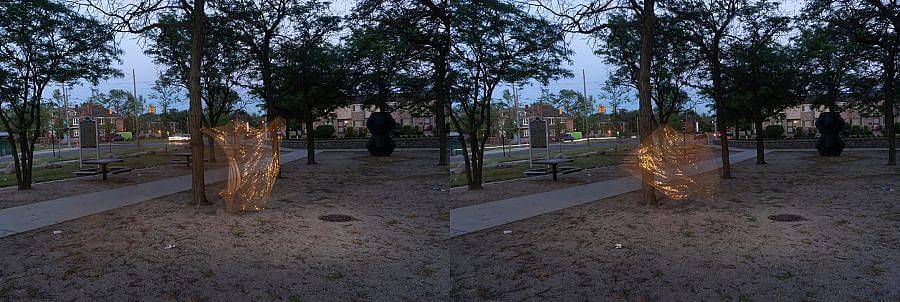
In the “Documentation of Dion Being A Bad Bitch… “ Dion is enveloped in a sea of gold, in addition, your new work “247ºSW 42º21’27” N 83º2’34” W 620 ft Elevation, Detroit, MI” features a shimmering gold figure. What significance do gold and opulence hold in your practice?
Growing up in Detroit, MI, the adornment of Gold was everywhere, Big Bamboo Earrings, Gold Necklaces, Gold Teeth, Gold Cardis, etc. In my eyes, gold is a sign of Black royalty right next to Peacock Wicker Chairs, Fur Coats, and Gator Shoes. Like honestly have you seen the Color Gold on Black skin, it makes us look GODLY, so gold is ever-present in a lot of my work. It can be seen in “BLKBOYCOLORED”, it’s seen throughout “Dion”, and now it’s in the Portal of “A Way To Get Gone”. In a short writing piece of mine that is paired with “A Way To Get Gone” I write
{Ever question why gold looks the way it looks on black skin? It’s because Subconsciously, we know it holds power, we know, that it is the mineral that the portals that get us gone resemble. It’s under the soil, it runs thru our blood without us knowing… like a tracking device?!
No,
like a guide, like a way home
It gives us this power to find a way out when most need it}
Gold is a source of life, is highly sought after, highly traded, it was one of the things that made Mansa Musa of the Mali Empire the richest man in History.
Can you discuss your work, “Project 20’s,” where you aim to photograph over 200 Black and Brown people between the ages of 20 and 30 nationwide, done in part to address how “Black and Brown people are being removed from their neighborhoods and communities for capital gain”? What role does collaboration play in the series?
“Project 20’s” deals with the resistance and survival of Black and Brown people between the ages of 20 and 30. It is inspired by my upbringing in Detroit, MI, and my love for contemporary Hip-Hop music. “Project 20’s” comes from two specific songs, “We Don’t Care” by Kanye West from his College Dropout album, and “Chapter Six” by Kendrick Lamar from his Section 80 album. Both of these songs speak about the life of minority youth in marginalized communities; struggling to make a living and be happy by any means necessary. This, as a result, leads a large amount of Black and Latinx youth to either end up in jail or worse dead. This topic became more important to me as I found myself making Chicago home and seeing how gentrification and poverty were affecting Black and Latinx Youth (i.e putting them in positions that marginalized them even more).
This project is set for me to photograph over 200 Black and Latinx people. I am reaching out to communities, groups, collectives, etc. to acquire the portraits I need. I have realized while working on this project that: First, this project is affecting more communities than I thought, which makes me want to expand to other cities nationwide to photograph more people. Secondly, not everyone will be able to make their way to me to have their portraits taken. Since this dilemma, I have been setting up makeshift studios wherever I can, (similar to Richard Avedon’s in the American West) to provide people the opportunity to be a part of the project.
Collaboration with community members is important with this work because they’re allowing me to capture their likeness to build awareness of how gentrification is displacing us from our communities, and homes. We collectively build conversations about this. The work in its final stage will be presented in Multiple ways, i.e A Photobook, Public Art Installation, and also using IG as a display tool due to its accessibility.
I’ve recently done a pop-up at Room Project in Detroit MI, which was extremely happy about, putting me at 163 out of my goal of 200.
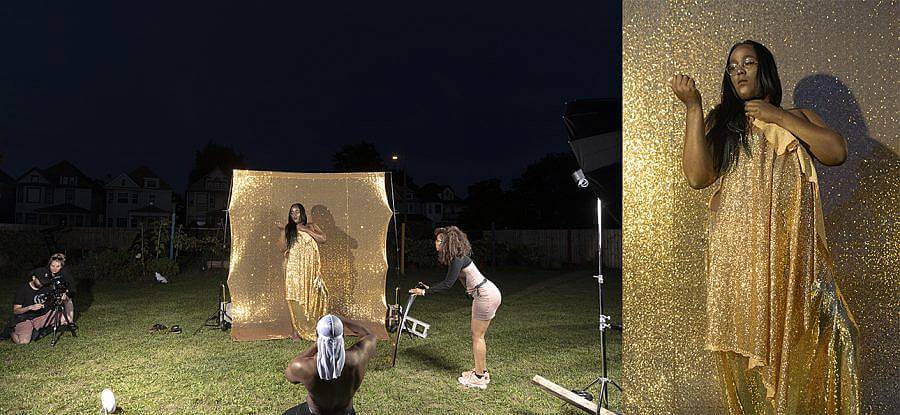
How did you start the Museum of Contemporary Art on INSTAGRAM (MOCA.IG) & how has the project evolved thus far?
So MOCA.IG was a response to being told that I didn’t have enough experience to work within art institutions. I’ve had a strong love for contemporary art from the African diaspora since I started studying art. Besides making visual work I’ve always been interested in the conversations artists were having, and how their work spoke to each other. Like how artists collectively explore conversations of power, femmehood, colonization, land, ownership, capitalism, politics, etc.
On October 2, 2017, I made the account and posted Nona Faustine’s “Over My Dead Body” from her White Shoes Series. I was honestly modeling the page after @museummammy (Kimberly Drew) Tumblr page, as well as the Blog Site Associated with @MOCADA (Museum of Contemporary African Diasporan Art), and using the platform as a way for me to curate. Using one of the most accessible social media platforms, Instagram, as a way to share art excites me.
Currently, the page has about 1.8k followers, which isn’t a lot, but it’s slowly growing. I even implemented some programming with it, doing MOCA.IG residency/ IG Takeovers where artists are given 7-day control of the platform and can share their work, ideas, research, influence, BTS of their studio, etc. I’ve also done some IG-live Artist Conversations which are also archived on a youtube page dedicated to any Live Conversations had.
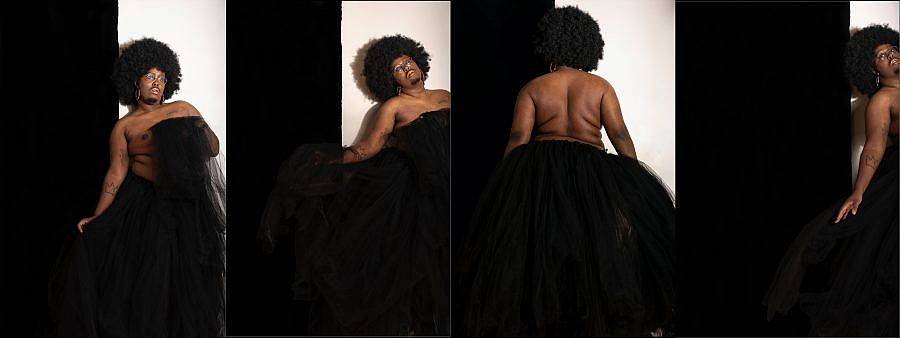
What artists and creatives have influenced your practice?
A lot of them are musical artists, Alice Coltrane, Sun Ra, Kelis, Solange, John Coltrane, Miles Davis, Ego Ella Mae, Kamasi Washington, Flying Lotus, this amazing band named SAULT, filmmakers Jenn Nikuru, Arthur Jafar, photographers Dawoud Bey, Rashid Johnson and Black Folklore for the new body of work that I’m currently working on.
The Poet Danez Smith has been a huge influence on my “Dion” work, as well as performance artist Kalup Linzy, artist Lyle Ashton Harris, and critic/ filmmaker Fatima Jamal Lewis.
And for Project 20’s Kanye West, Kendrick Lamar, Again Lyle Ashton Harris, and Tyree Guyton.
What are you reading/watching right now?
I just finished reading “Glitch Feminism” by Legacy Russell, Just started reading “Listening to Images” by Tina Campt, and looking at some African American Folklore. Currently Rewatching Lovecraft Country, and a lot of early 2000’s sitcoms via Netflix (i.e Girlfriends, Moesha, The Parkers), and The Queen’s Gambit (it’s good AF), kinda missing bad reality TV, and Drag Race lol.
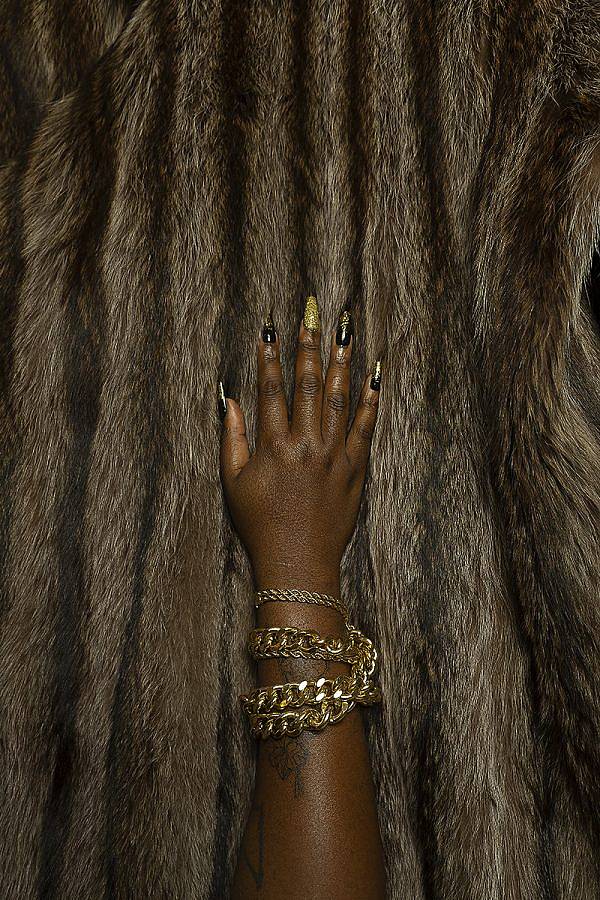
What is your current studio/workspace like?
What’s the studio? Living in Detroit there are not that many artist studio spaces. Where there are studio spaces they’re either the same price as my rent, which I refuse to do, or they are cheap and do not have the proper equipment or facilities for me to make the work that I need to make. So I’m currently working out of my apartment where I’m surrounded by my plants, all of my books, my records, my altar for my ancestors. I bought a desktop computer so that I can have a stationary place to work.
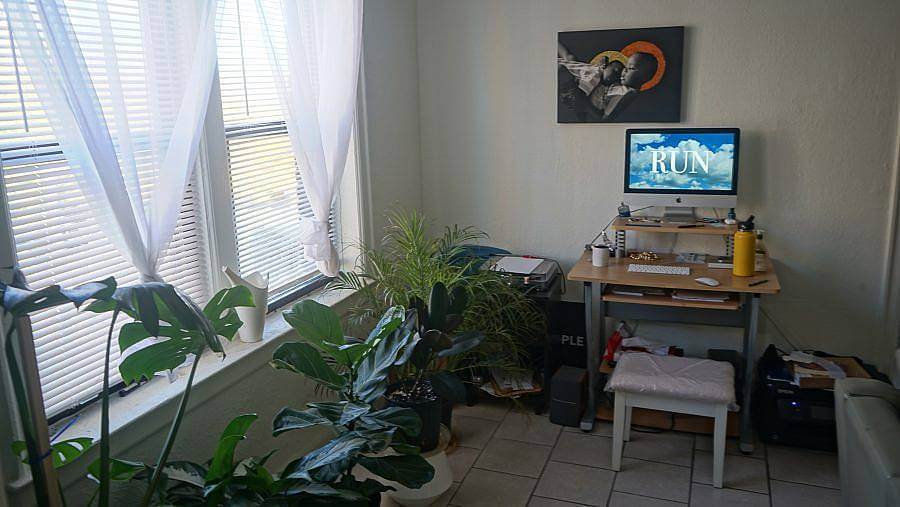
Do you have any recent or upcoming projects or shows?
Soon I will be in a public art installation through my alma mater Wayne State University in Detroit MI. The exhibition is titled IN THE AIR: VOICES FROM DETROIT & BEYOND, the work is being displayed on a billboard in Midtown Detroit, which is ideal because I will be putting #Project20’s up. I think it’s perfect because Midtown was one of the first places in Detroit that saw major gentrification. With that exhibition, I’m also giving an artist talk to the university about my current art practice. Like many other artists, I’m just excited for 2020 to be over so that everything that was postponed in 2020 can finally happen in 2021.
Interview composed by Amanda Roach.
